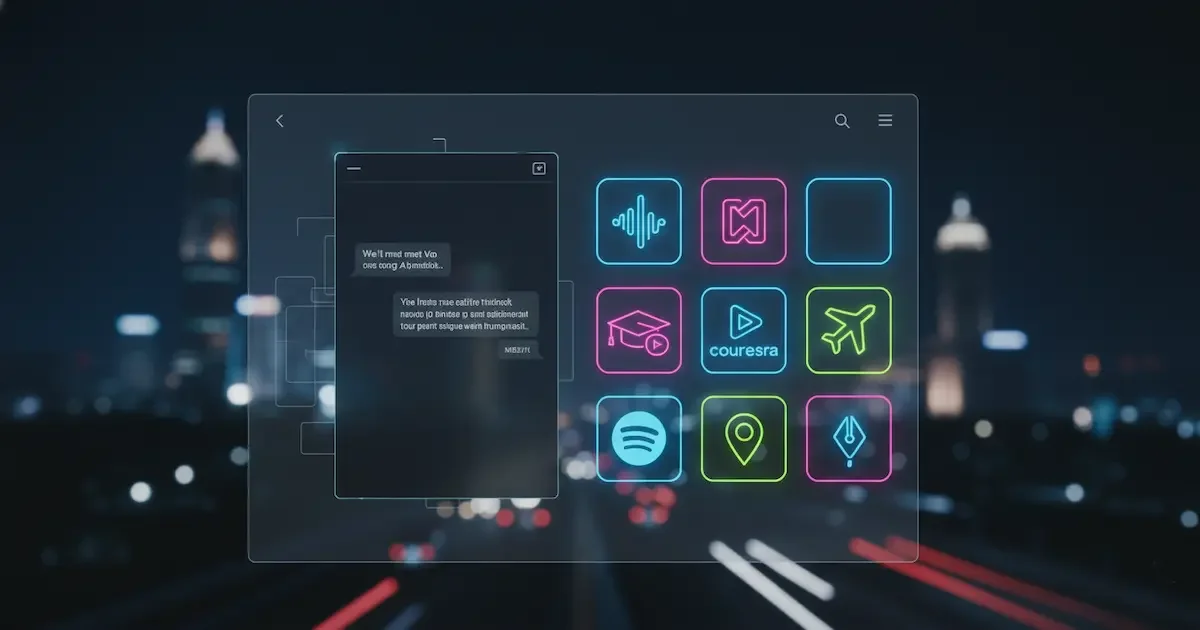OpenAI DevDay 2025: ChatGPT turns into a platform—and why that matters in India
OpenAI’s 2025 DevDay was less about single “wow” demos and more about a very deliberate pivot: ChatGPT as the place where apps live, agents work, and developers ship. Think of it like WhatsApp circa 2016 when payments and business APIs started creeping in—only this time the “inbox” talks back, writes code, calls APIs, and runs entire workflows.
OpenAI showed three big moves:
1. Apps inside ChatGPT
You can now build apps that run within ChatGPT, complete with UI, auth, and access to user data (with consent). Launch partners include Spotify, Canva, Coursera, Booking.com, Expedia, Figma, Zillow and more—basically the services a typical urban Indian user touches in a week, now available without leaving the chat window. For devs, there’s an Apps SDK to ship these experiences directly into ChatGPT.
2. Agents that actually do things
Beyond “chat,” OpenAI is standardising how you build and run agents—scripts that can plan, call tools, and execute tasks reliably. Expect AgentKit (and adjacent tooling) to harden the messy edges: state, tool calling, guardrails, and handoffs into enterprise systems. The direction is clear—developers should be able to assemble real, production-grade agents without duct tape.
3. New models for harder problems
OpenAI introduced GPT-5 Pro in the API—positioned for high-accuracy, deep-reasoning use cases in domains like finance, legal and healthcare. On the media side, Sora 2 arrives in the API with more control over video length, aspect ratio, and remixing, plus improved sound design and alignment with visuals. There’s also a smaller low-latency voice model (GPT Realtime Mini) for snappy, on-device-feeling interactions.
And the scale numbers? OpenAI says it’s supporting 4 million developers, 800M+ weekly ChatGPT users, and 6 billion tokens per minute across the platform. Love them or side-eye them, those are platform-scale metrics.
What this unlocks—especially for Indian builders
A. Your app can “live” where the user already is
If your product depends on frequent, micro-interactions—searching inventory, generating a design, checking an order—embedding it inside ChatGPT reduces app fatigue. For Indian SMBs and consumer apps, this is a chance to meet users where they spend time instead of fighting for yet another install. (Also explains why analysts are framing this as “ChatGPT becoming an app store.”)
B. The agent era wants real workflows, not demos
AgentKit-style scaffolding matters for Indian enterprises dealing with fragmented systems, legacy ERPs, and compliance. If agents can orchestrate UPI refunds, reconcile GST invoices, or file a service ticket in Tally or SAP without babysitting—now we’re talking serious ROI. Early reporting focuses on pricing, data controls, and enterprise guardrails—exactly what CIOs ask before pilot approvals.
C. Content + commerce + customer support get a quality bump
Sora 2 in the API means production-grade video variations for performance marketing, learning content, and product explainers—without full video teams. Combine that with a high-accuracy model like GPT-5 Pro for policy-aware support and you have fewer escalations and faster TATs in BFSI, health, and gov-adjacent use cases.
The fine print (and what to watch)
· Compute scarcity & chip partnerships: OpenAI executives again flagged supply constraints. Announced tie-ups with Nvidia/AMD are encouraging but still “announcement-stage,” as investors politely reminded everyone. Translation: plan your capacity and SLAs conservatively.
· The platform risk flips: If ChatGPT becomes a dominant distribution surface, your classic growth loops (SEO, app store rankings) matter less; in-chat discovery and UX matter more. Some public-market app partners didn’t see immediate stock bumps post-event—Wall Street is still pricing the new dynamics.
· Enterprise controls & pricing: Expect OpenAI to court CIOs with clearer data boundaries, tenancy models, and cost levers. If you’re building for BFSI/health in India, shortlist environments that keep data residency and audit trails sane.
Practical playbook for Indian teams
· Prototype a ChatGPT app for your core job-to-be-done. If your user opens your product more than twice a week, there’s likely a “chat-first” slice. Start with one high-friction task: onboarding a loan application, designing a campaign, or concierge-style trip planning.
· Give your agent a spine (tools, memory, guardrails). Define tool boundaries: UPI collect/cancel, CRM read/write, doc generation, RAG over policy docs. Decide where the agent is autonomous vs. requires human approval.
· Measure outcomes, not vibes. Track resolution time, first-contact resolution, average handle time, NPS. Compare GPT-5 Pro vs cheaper models where accuracy isn’t mission-critical.
· Localise like you mean it. Hindi + at least two regional languages; template your prompts for code-switching; plan for vernacular inputs. It’s 2025—don’t ship English-only.
· Budget for media. With Sora 2 in the API, A/B video is the new A/B headline. Keep a lightweight creative pipeline ready.
Bottom line
DevDay 2025 wasn’t a magic trick; it was a line in the sand. OpenAI wants ChatGPT to be your workspace, app store, and runtime—and it’s giving developers the scaffolding to build serious agents and in-chat apps. If you’re building in India, this is your chance to leapfrog UX friction, wrap legacy systems with intelligent interfaces, and move from “demo” to “daily use.” The next 12 months will belong to teams that treat ChatGPT as a channel—and design for it ruthlessly.
